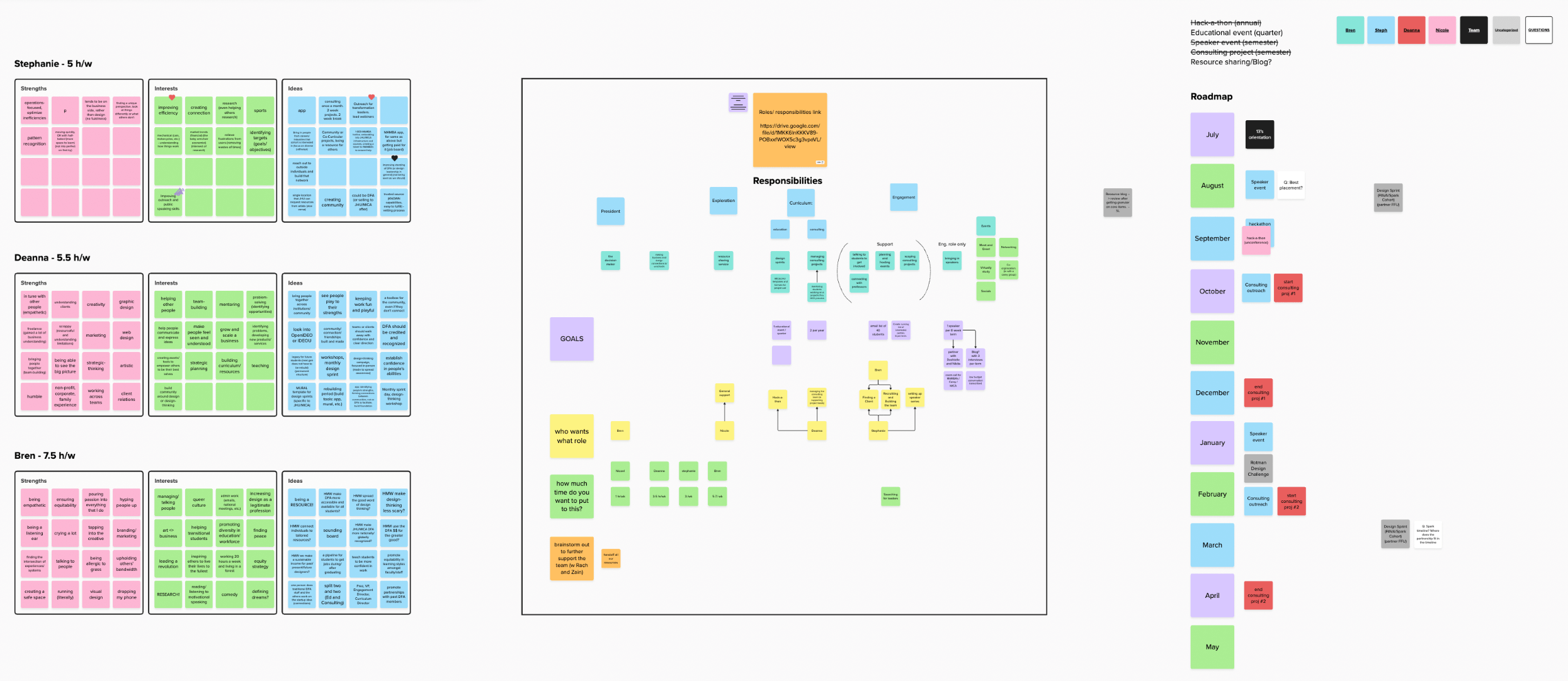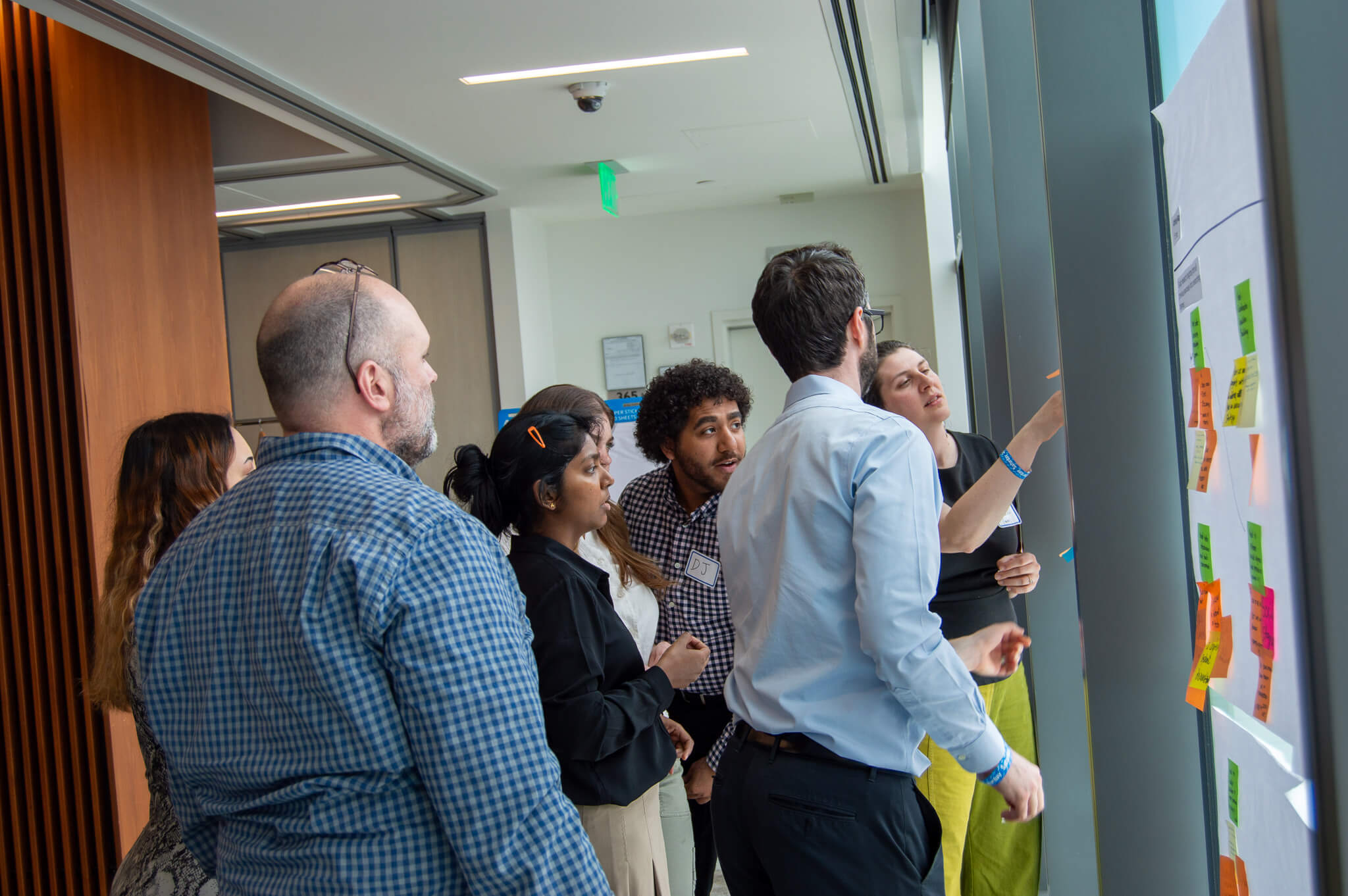Design for America
Overview
Design for America is a national organization that is focused on using design-thinking strategies to solve systemic problems in our society. They have chapters at many universities across the United States.
The Johns Hopkins Carey Business School and MICA joint chapter needed to restore the historic, robust nature of the organization at both universities. We found that leading consulting projects and design sprints throughout the school year would build a solid member base and increase consistent engagement each year.
Discovery
As a team, we wanted to understand how each member works best and plan the next year based on strengths. Luckily, we were able to customize our programming to our interests, which made it easier to plan. We had three individuals willing to participate in leadership for the year, but ended the year with two, so we altered and shifted the roadmap throughout based on bandwidth.
We decided that our vision for the year was to increase engagement and interest at both universities. We wanted to focus internally, so that, in future years, the team can expand on its existing member base.

Design for America at JHU + MICA did not track its member base, so we were not able to work with or contact students who were involved in recent years. We decided to hold information sessions and post on the LinkedIn page to make the organization known.
We also had a member of the leadership team focus on partner engagement. They were able to reach out to possible local and virtual partners that could either support us throughout the year or host a consulting project.
With the national organization of Design for America focusing on educating students and professionals on the practice of design-thinking, we felt that it was important to host synchronous discussions on important design topics.
Along similar lines, we felt that the best way to learn and practice was in-person involvement, so we decided to plan and implement a full-day, design-thinking conference.
Delivery
For the student-led consulting projects, we wanted to define the general team dynamic before the teams were even formed. We decided to have five roles: Project Manager, Designer, Business Analyst, Subject Matter Expert, and Data Analyst. The consultants were assigned roles but had to define responsibilities themselves. Each project was so nuanced that this role differentiation and freedom of responsibility promoted adaptability amongst the consultants.
Design for America had established a design-thinking process that each university could adopt and promote. The process was 1) Identify, 2) Immerse, 3) Reframe, 4) Ideate, 5) Built, and 6) Test. We decided to complete a step of the process each week with the consultants, so, in total, the projects were six to eight weeks long.
Each week we conducted a two-hour workshop with the consultants based on the current phase in the process, which included a descriptive presentation, collaborative exercises, and work time.
By the end of the consulting project, the consultants were required to present their process and high-fidelity prototype to the project partner. Along with the presentation, the Project Manager needed to package the information utilized and created for the project partner to reference and implement within their organization.


Results
The consulting project length was an issue for the consultants, as they were required to do a lot of work in a short amount of time. We predicted this issue and felt that it was important for the consultants to not obsess over minute details, but, unfortunately, the intense speed negatively impacted quality.
Surprisingly, participation in programming that involved practice was immense. We had full consulting teams, design-thinking conference, and project partner opportunities. Participation that involved discussion and no practice was underwhelming. We found that students and partners wanted to educate themselves by putting in the work, rather than just listening or talking.
One project partner shared, "The team blew us away. Thank you so much for this amazing opportunity to collaborate with Design for America. We are so excited by the research and insights found by the team. Their work will be invaluable to [our] development. Their professionalism was unmatched and communication was top-tier. It was truly a pleasure to partner with the team!"
Conference
Along the virtual, synchronous consulting projects, our team's goal was to host an in-person event. We decided to organize a Design-Thinking Conference funded by a donor organization and Johns Hopkins Carey Business School.
We began planning for the conference about four months before the event. As a team, we created a roadmap with detailed tasks and requirements. While we completed the programming and event logistics, Johns Hopkins Carey Business School helped with typical event space needs, like catering and technology.
The conference was held in March of 2025 with over 60 individuals attending. Students, industry professionals, interested designers, and inexperienced learners came together for a full-day of speaker sessions, a panel, and a collaborative design-thinking project. I had the opportunity to lead the group project, where each table went through the phases of design-thinking and build a low-fidelity prototype based on their given problem space.

